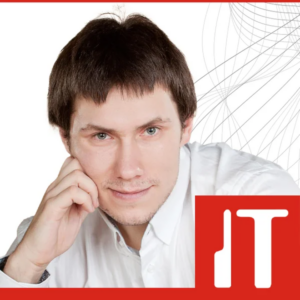Introduction to Python Programming
Have you ever wondered how ChatGPT is created, or been curious about how these mysterious AI and machine learning entities work? Would you like to learn how to control them yourself and be ready to start programming?

Python is one of the most widely used programming languages globally, gaining popularity due to its simplicity, extensibility, and a vast array of libraries that assist in solving complex problems in machine learning, data analytics, and statistics.
During the course, participants will learn through practical exercises about the language constructs that make up a Python application and how to use these elements to create software. Upon completion, learners will have acquired fundamental programming concepts and basic knowledge enabling them to write and run programs developed in Python.
The purpose of the course is to provide learners with basic programming knowledge and practical experience, enabling them to continue independent studies to become software developers after the course.
Target audience: everyone who wants to acquire basic programming knowledge in the Python programming language.
Prerequisites for the course: interest in the Python programming language, basic computer skills and intermediate English proficiency.
Koolituse programm:
- Day
- 09:00 – 09:15 Gathering
- 09:15 – 11:00 Module 1: Programming and getting started
- computer programs and how a computer executes them;
- programming languages and their differences;
- developer’s toolbox and its preparation.
- Methods used: lecture, discussion, practical session
- 11:00 – 11:15 Coffee break
- 11:15 – 12:45 Module 1: Programming and getting started
- developer’s toolbox and its preparation;
- my first program;
- program source code and its interpretation;
- Methods used: lecture, discussion, practical session
- 12:45 – 13:30 Lunch
- 13:30 – 15:00 Module 2: Data types, variables, inputs, and outputs
- What data types can be found in Python?
- What operations can be performed with data types?
- How to store data?
- What inputs and outputs can be used?
- Methods used: discussion, practical session
- 15:00 – 15:15 Coffee break
- 15:15 – 17:00 Module 3: Program Structure
- structuring source code;
- functions;
- processing inputs;
- business logic.
- Methods used: lecture, discussion, practical session
- Day
- 09:00 – 09:15 Gathering
- 09:15 – 11:00 Module 4: Lists, multi-dimensional arrays and loops
- lists;
- multi-dimensional arrays;
- How to use and iterate through lists and arrays?
- Methods used: lecture, discussion, practical session
- 11:00 – 11:15 Coffee break
- 11:15 – 12:45 Module 5: Control statements and business logic
- checking input and output;
- checking data types;
- control statements for multi-dimensional arrays.
- 12:45 – 13:30 Lunch
- 13:30 – 15:00 Module 6: Analysis and adaptation of a demo application
- structure of the demo application;
- understanding the business logic of the demo application;
- modifying the demo application;
- checking input-output parameters;
- modifying the business logic of the demo application.
- Methods used: discussion, practical session
- 15:00 – 15:15 Coffee break
- 15:15 – 17:00 Module 6: Analysis and adaptation of a demo application
- business logic of the demo application and modification;
- verifying the business logic and input-output results of the demo application.
- Methods used: lecture, discussion, practical session
- Day
- 09:00 – 09:15 Gathering
- 09:15 – 11:00 Module 7: Independent work
- analysis of independent work;
- mapping the needs of independent work;
- designing independent work;
- developing independent work.
- Methods used: lecture, discussion, practical session
- 11:00 – 11:15Coffee break
- 11:15 – 12:45 Module 7: Independent work
- developing independent work;
- testing independent work;
- presenting independent work.
- Methods used: lecture, discussion, practical session
- 12:45 – 13:30 Lunch
- 13:30 – 15:00 Module 8: Business logic and error handling
- creating a reliable application;
- handling unexpected errors;
- testing business logic for errors.
- Methods used: discussion, practical session
- 15:00 – 15:15 Coffee break
- 15:15 – 17:00 Module 9: Course summary and feedback
- increasing the reliability of independent work;
- course summary;
- feedback.
- Methods used: lecture, discussion, practical session
After completing this course, students will be able to:
- understand what the Python programming language is and its basic constructs;
- recognize the capabilities offered by the Python programming language;
- know how and when to use iterations and iterative structures;
- use external files in Python programming;
- understand and purposefully use functions and sub-functions;
- create data structures;
- apply object-oriented programming in Python.
The training is practically oriented, with the theoretical part alternating with demonstrations and independent exercises.
Necessary equipment is provided in the training classroom, but participants can also use their own personal computers, provided they have full administrative rights.
Trainer:
Viko Kõva has over 15 years of experience as a software developer and trainer. He possesses extensive knowledge and experience primarily with Microsoft products and services. He mainly trains on Microsoft products such as SharePoint, Power Platform (Power Apps, Power BI, and Power Automate), and data analysis services like MS SQL, SSIS, Analysis Services, Azure Data Lake, and Azure Data Factory from both an administrative and developer perspective.
Kõva has over 15 years of experience as a software developer and trainer. He possesses extensive knowledge and experience primarily with Microsoft products and services. He mainly trains on Microsoft products such as SharePoint, Power Platform (Power Apps, Power BI, and Power Automate), and data analysis services like MS SQL, SSIS, Analysis Services, Azure Data Lake, and Azure Data Factory from both an administrative and developer perspective.
Viko acquired his software development skills at the IT College. His major projects include the ENETA portal developed for Microsoft and a state budget planning information system in the field of data analysis.